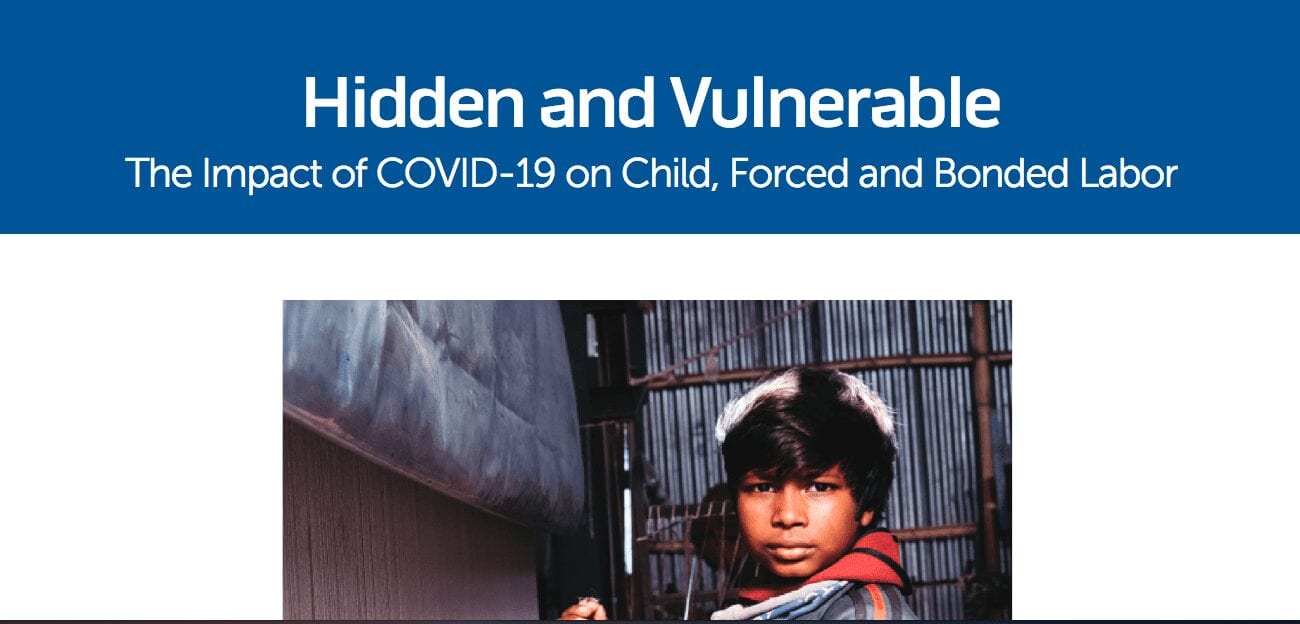
Hidden and Vulnerable: Impact of COVID-19 on Child, Forced and Bonded Labor
The impacts of the COVID-19 pandemic have caused massive supply chain disruptions around the world, wreaking havoc on marginalized worker communities globally. Estimates of the damage are devastating. The World Bank expects remittances to low and middle-income countries to decrease by approximately 20% in 2020,while UNICEF’s Executive Director estimated a minimum of 24 million children will drop out of school. UNICEF further reports that the longer children stay out of school, and the more desperate their family circumstances, the less likely they are to go back.
Loss of employment due to the shuttering of South Asia’s apparel and textile industries has exacerbated and also unveiled the vulnerabilities that informal and migrant worker communities in the region face with respect to child labor, debt bondage, forced labor, and loss of wages and employment. How-ever, there is very limited data on the extent and nature of these increased risks, as well as how to mitigate them. GoodWeave’s close proximity to producer communities in the region enables us to document the immediate and specific impacts faced by workers, and increased risks of child, forced and bonded labor,which by all accounts have intensified as a result of COVID-19.3 In fact the COVID-19 crisis has both unveiled and intensified the fragility of global supply chains and the vulnerabilities that result for workers, communities and businesses globally. As supply chains ramp back up, many policy-makers and civil society organizations have underscored the need for new standards that benefit and ensure rights for the most marginalized and promote improved sustainability.
Read more here.
